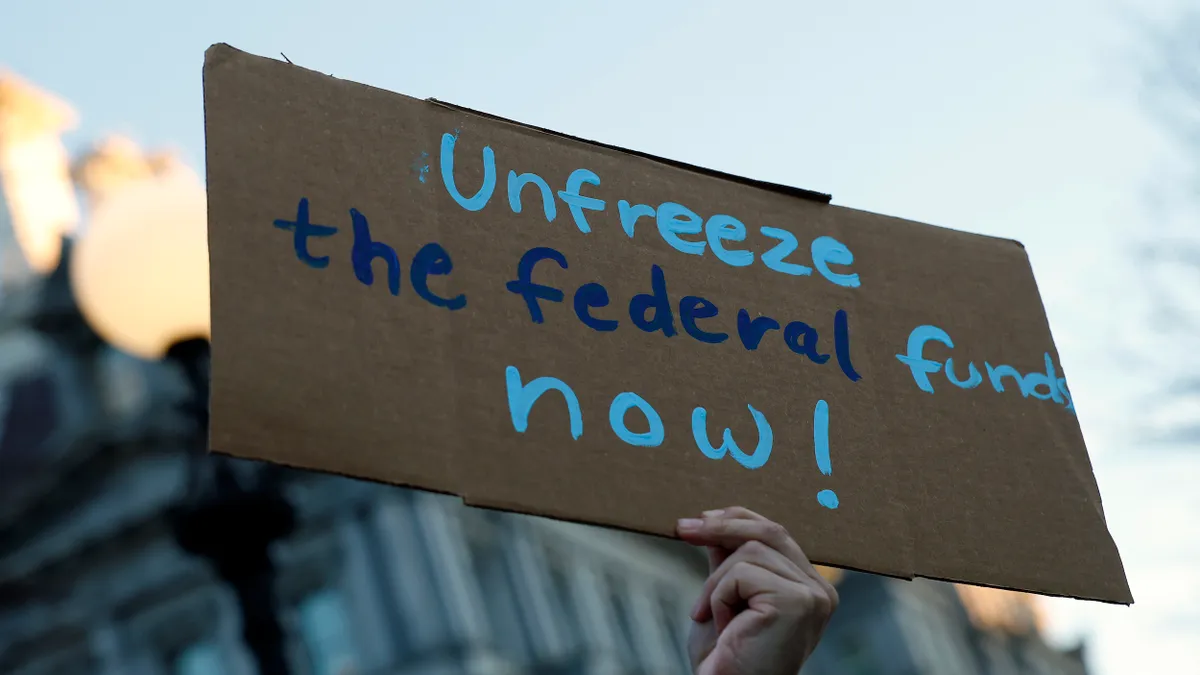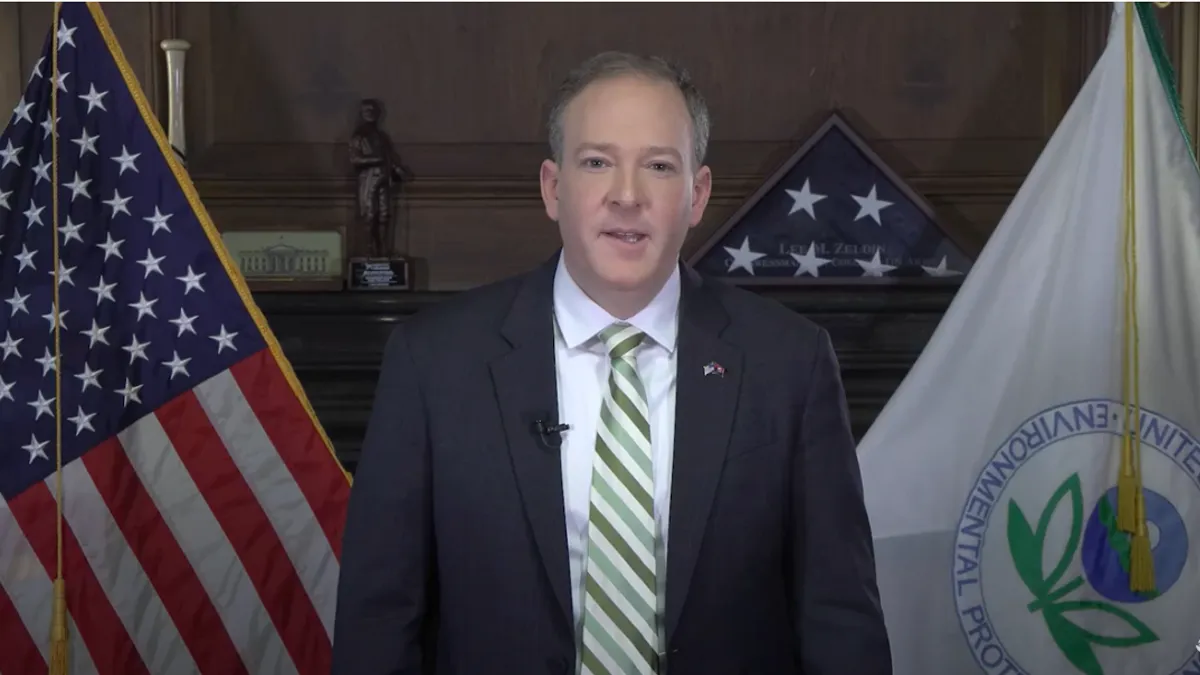UPDATED, August 27, 2021: The U.S. Supreme Court ended the Biden administration’s latest eviction moratorium on Thursday.
Georgia and Alabama real estate trade groups and landlords challenged the Centers for Disease Control and Prevention’s (CDC) most recent extension of the moratorium. The court’s conservative majority released an opinion Thursday stating that the CDC had exceeded its authority. The court’s three liberal justices dissented.
The decision comes as cities experience an increase in coronavirus infections due to the delta variant, and as new data shows that states and localities have distributed just 11% of the federal rent relief dollars intended to help prevent eviction for millions of vulnerable U.S. residents.
“The federal eviction moratorium was a lifeline for millions of families, the last remaining federal protection keeping many safely and stably housed during the pandemic,” National Low Income Housing Coalition President and CEO Diane Yentel said in a Twitter statement.
August 6, 2021: The national eviction moratorium put in place last year during the COVID-19 pandemic ended July 31, and Congress’ last-ditch efforts to extend it were not successful. However, the U.S. Centers for Disease Control and Prevention issued a new 60-day eviction moratorium on Tuesday, running through Oct. 3, for areas with high levels of COVID infections. The order covers about 90% of the country’s population right now.
The moratorium is considered a health measure under the CDC’s jurisdiction because research points to evictions as a factor contributing to COVID-19's spread. When renters are forced to leave their homes, they often move in with people from outside their household, or they take refuge in shelters or resort to living on the streets, all actions which have the potential to further spread the virus. In addition, vaccination rates have been lower among populations that are most likely to experience evictions, the CDC says.
Abby Boshart, a policy coordinator at the Urban Institute, said renters are not immediately kicked out of their homes when an eviction ban ends. Instead, landlords have to file for eviction, the cases progress through the court system and judges issue a ruling for each individual case. Many courts are not back to pre-pandemic working capacity and have backlogs of evictions filed last year.
Prior to the pandemic, landlords filed about 3.6 million eviction cases each year, although not all of them resulted in eviction. Experts estimate that number could balloon to 6.5 million without the new assistance. The CDC, citing research from The Eviction Lab at Princeton University, says federal, state and local eviction moratoria in 2020 led to at least 1.5 million fewer eviction filings than in 2019.
As was the case with the previous orders, the new order will not protect every renter. The Associated Press reported three days after the moratorium's end that more eviction cases had already begun trickling into courtrooms before the new order's enactment.
"Last year, between the end of the CARES Act moratorium and the beginning of the CDC moratorium — in August and September of last year — we saw a large spike of evictions," said Emily Lemmerman, research specialist at The Eviction Lab.
Lawsuits are cropping up challenging the new moratorium's legality. A housing group coalition led by the Alabama Association of Realtors filed a lawsuit in Washington, D.C., claiming the U.S. Supreme Court previously ruled that the CDC could not extend an eviction moratorium past July 31.
And some localities aren't honoring the new order, just as some didn't honor the previous one. The CDC reports that more than 450,000 eviction filings occurred during the previous moratorium period. Franklin County, Ohio — where Columbus is the county seat — is among the areas that announced this week it will begin accepting and processing eviction filings despite the new moratorium.
"I think the majority of places will still honor the moratorium to protect renters. But we will probably see more cases because we're not sure what the Supreme Court will rule or for how long," Boshart said.
A clogged funding pipeline
Many local and state governments issued their own eviction moratoriums during the pandemic. Austin, Texas, just extended its moratorium to October; New Jersey's statewide moratorium runs through Jan. 1, 2022. Governments at these levels also are struggling to get help to families in need, especially when they haven't undertaken the task during the pandemic or before.
"These localities have had a gargantuan task of setting up brand-new programs through new mechanisms in just a matter of months," Boshart said. "Many of the places that are getting the funding out the fastest — we see it in Virginia and Washington, D.C., those places are doing well — it's because they had rental assistance programs in the past, they have strong housing networks and they have experience with setting up these programs. It's places that have never done anything like this before that are really struggling."
Cities in Louisiana and Alabama are among those facing criticism for not administering their allocated federal renter's assistance funding expeditiously. It's such a massive problem across the country that only about $3 billion of the nearly $50 billion previously allocated has reached its targets, Lemmerman said. Treasury Secretary Janet Yellen said Wednesday that her department will use the 60-day moratorium extension to accelerate aid distribution to struggling renters and landlords.
"We at the Urban Institute had been looking at the rate of distribution in June. If the June rate continues, it will take several more months to get this funding out, instead of just the two months [until Oct. 3]," Boshart said. "I think that the moratorium ending, even though it was so brief, was a little bit of a wake-up call for a lot of these programs."
The lack of outreach to ensure that renters and landlords know funding is available to them has been a huge barrier, Boshart said. According to the Urban Institute, about half of renters and 40% of landlords reported in May that they didn't know about the federal rental assistance. Many people also don't realize it's available for both parties, not just renters: Landlords at a loss for renter dollars can use their federal assistance for things like ongoing maintenance and utility payments.
Cities can overcome the outreach barriers by working with housing authorities and trusted community-based groups to connect with people in need, Boshart said. For example, housing agencies and advocacy groups in Sarasota County, Florida, report they will use the extra time to get the word out about the available assistance.
Documentation requirements are another obstacle preventing funding from reaching renters. Many relief programs require landlords to sign off on a renter's application, but not all landlords can or will participate. The U.S. Treasury updated its Emergency Rental Assistance Program recommendations in June to state that renters should be paid even if a landlord doesn't participate.
"This is really important because renters should not be evicted for no fault of their own if they did their due diligence," Boshart said.
States and localities can provide assistance by better enforcing eviction moratoria and renter protections, these experts say. States also can revisit the application and legal processes because many of the assistance programs are court-based. For example, Minnesota and Oregon don't consider eviction filings for people who are waiting to receive a response to their rental assistance applications, Lemmerman said. Washington, D.C., has a similar stipulation.
Legal assistance programs for renters are another idea, given that, on average, 90% of landlords have representation in eviction cases compared with only 10% of renters, Boshart said.
Temporary vs. permanent fixes
The eviction moratorium that was designed as a temporary fix for renters and landlords hurt by the pandemic has now continued for more than a year. The pandemic is exacerbating the housing insecurity and affordability crisis that existed before it began.
"There were 3.7 million evictions filed in 2016... That number has continued to be elevated in the years after that," Lemmerman said. "It's important to note that this has been a crisis for years."
Wage stagnation over the last 20 years, combined with soaring housing costs, play an outsized role. This potentially could worsen as inflation concerns grow, which could prompt rent increases in the coming months, sources say. Rental housing supply is another concern: In recent years, more rental properties have catered to high-income populations, giving low- and middle-income renters less access to affordable housing, Lemmerman said.
Advocates are renewing calls for long-term, systemic change to reduce housing insecurity. But in the short term, they say, municipalities can help by enacting provisions under the new eviction moratorium and distributing the monetary assistance faster.
"A lot of people are breathing a sigh of relief this week, but it really is just momentarily. There needs to be a lot of hustling to get the money out... We've already allocated it," Boshart said. "If we allow millions of families to be evicted, it will not only impact them and their communities, but it will also come back on the U.S. taxpayer. A lot of households are behind only by $1,000, whereas paying to house them later or get them back on their feet will cost more."




















